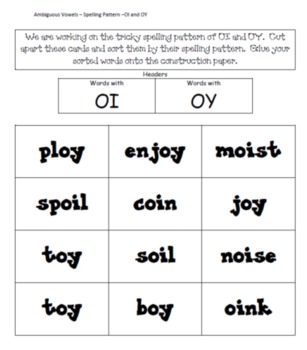Module 10 Definitions
Word Consciousness - an attitude of curiosity and attention to words critical for vocabulary development

The practice of helping students develop word consciousness is highly important in literacy education. Students who are not exposed to a wide range of vocabulary at home or in their domestic environments often struggle to progress academically in literate settings. Educators have a responsibility to help their students develop word consciousness in order to expand their reading comprehension abilities, as well as their students' literacy level. Helping students develop a greater level of word consciousness especially helps students whose vocabulary exposure may be limited.
Diphthongs - complex speech sounds beginning with one vowel sound and moving to another within the same syllable.

Ambiguous Vowels - a vowel sound represented by a variety of different spelling patterns, or vowel patterns that represent a wide range of sounds

Homophones - words that sound alike, are spelled differently, and have different meanings.

These are important in literacy education because in studying homophones as a concept, students may learn that despite the words sounding the same, their spellings and meanings differ from one word to another. Studying homophones helps students distinguish disparities between sound and spelling/transcription.
Homographs - words that are spelled alike but have different pronunciations and different meanings

Studying homographs is important in literacy education because it helps students understand a concept similar to that of homophones, but with a different precedent. Students need to realize that words being spelled alike does not necessarily mean that their definitions or the sounds of the word are the same. Studying homographs helps students recognize how many different meanings can apply to individual words, but also how different letters that make up the same words can create different sounds in that word, which impacts reading comprehension.
Homonyms - words that share the same spelling but have different meanings

Studying homonyms is one of the first levels before studying homographs. Many homographs may initially appear to be homonyms. Studying homonyms helps students develop a recognition that the context of certain words in a text impact the meaning of that word. Even when words are pronounced the same way, the context of the sentence they are in can help students recognize that their meanings are not the same.

The practice of helping students develop word consciousness is highly important in literacy education. Students who are not exposed to a wide range of vocabulary at home or in their domestic environments often struggle to progress academically in literate settings. Educators have a responsibility to help their students develop word consciousness in order to expand their reading comprehension abilities, as well as their students' literacy level. Helping students develop a greater level of word consciousness especially helps students whose vocabulary exposure may be limited.
Diphthongs - complex speech sounds beginning with one vowel sound and moving to another within the same syllable.

Ambiguous Vowels - a vowel sound represented by a variety of different spelling patterns, or vowel patterns that represent a wide range of sounds

Homophones - words that sound alike, are spelled differently, and have different meanings.

These are important in literacy education because in studying homophones as a concept, students may learn that despite the words sounding the same, their spellings and meanings differ from one word to another. Studying homophones helps students distinguish disparities between sound and spelling/transcription.
Homographs - words that are spelled alike but have different pronunciations and different meanings

Studying homographs is important in literacy education because it helps students understand a concept similar to that of homophones, but with a different precedent. Students need to realize that words being spelled alike does not necessarily mean that their definitions or the sounds of the word are the same. Studying homographs helps students recognize how many different meanings can apply to individual words, but also how different letters that make up the same words can create different sounds in that word, which impacts reading comprehension.
Homonyms - words that share the same spelling but have different meanings

Studying homonyms is one of the first levels before studying homographs. Many homographs may initially appear to be homonyms. Studying homonyms helps students develop a recognition that the context of certain words in a text impact the meaning of that word. Even when words are pronounced the same way, the context of the sentence they are in can help students recognize that their meanings are not the same.
References
Bear, D. B., Invernizzi, M., Templeton, S., & Johnston, F. (2011). Words their way:
Word study for phonics, vocabulary, and spelling instruction (6th ed.). Upper Saddle
River, NJ: Pearson.
Comments
Post a Comment